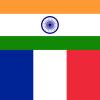Gems, Timber and Jiziya: Pakistan's Taliban Harness Resources to Fund Jihad
The Taliban resurgence in Pakistan’s lawless provinces and its unhindered march towards the heartland of the restive country is fueled by an ever increasing economic life-line. Unlike Afghanistan’s Taliban, which depends on the poppy trade for revenues, the robustness of the Pakistan Taliban’s financial strength depends on a variety of sources, ranging from the timber trade, precious stone mining and now, the imposition of a religious/protection tax collected from minority religious communities.



